Mathematics exhibition at Fondation Cartier, Paris
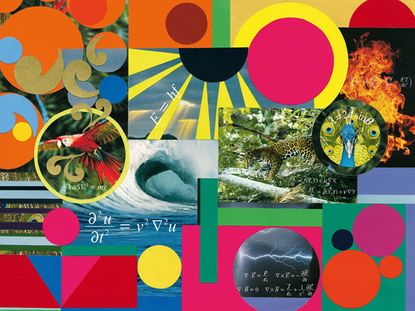
Mathematicians have a tendency to wax lyrical about the 'beauty' and 'elegance' of their discipline. For the most part, this is a tricky concept for the layman to grasp. The enigmatic glamour of prime numbers, for example, is beyond the ken of most of us. But Mathematics: A Beautiful Elsewhere - a new exhibition at the Fondation Cartier pour l'art contemporain - aims to translate the mysterious allure of maths to a wider audience, with a little help from artists like David Lynch, Patti Smith and Takeshi Kitano.
The exhibition, developed in association with the Institut des Hautes Études Scientifiques (IHÉS), takes visitors on a journey through mathematical thought, guided by six of its most prominent figures: Sir Michael Atiyah, Alain Connes, Nicole El Karoui, Misha Gromov, Cédric Villani and Don Zagier - world authorities in fields such as number theory, algebraic geometry, differential geometry and probability.
These eminent eggheads have been invited to come up with new ways of 'seeing, hearing, doing, thinking and interpreting mathematics'. But while there's no doubting the superiority of their grey matter, the assumption is that they might need a hand when it comes to making themselves understood to the average maths dunce.
To help them communicate their brain-meltingly complex ideas, Fondation Cartier has teamed these experts up with eight artists - Jean-Michel Alberola, Raymond Depardon and Claudine Nougaret, Takeshi Kitano, David Lynch, Beatriz Milhazes, Patti Smith and Hiroshi Sugimoto - with the goal of translating aspects of their subject into tangible experiences in a range of media.
David Lynch, for example, has created a structure in the shape of a zero to accommodate Misha Gromov's Library of Mysteries, which provides a retrospective of the major events in the history of mathematics via an audiovisual installation.
Lynch also contributed to 'Ergo-Robots/Flowers Fields: Artificial Curiosity and Language', an interactive installation that sees a 'tribe' of robotic figures emerging from an egg and then exploring their environment, learning new skills and communicating with their human visitors. The robots' heads, which Lynch designed, have a distinct touch of Eraserhead about them.
Arguably the most germane of all the exhibition's installations, however, is Hiroshi Sugimoto's graceful sculpture, a hyperbolic form entitled 'Surface of revolution with constant negative curvature' - which poses the thorny question underpinning this entire project: how can mathematical abstraction be represented visually?
Wallpaper* Newsletter
Receive our daily digest of inspiration, escapism and design stories from around the world direct to your inbox.
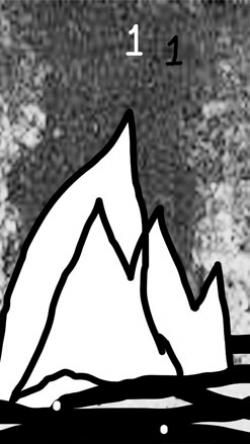
’Fireplace’ is an animated film created for the exhibition by David Lynch
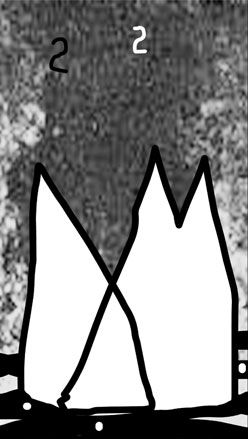
A still from ’Fireplace’
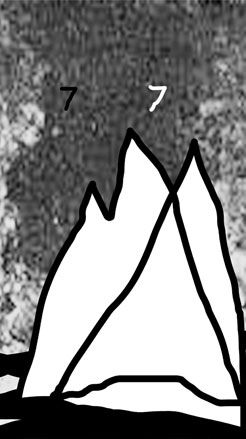
A still from 'Fireplace''
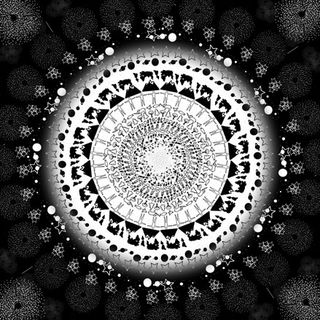
’Galaxy’ is a second animated film created for the exhibition by David Lynch
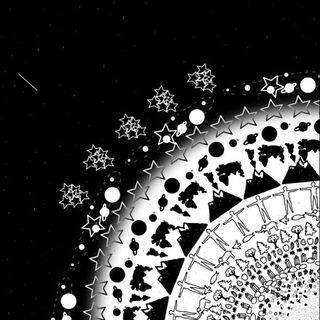
Still from 'Galaxy'
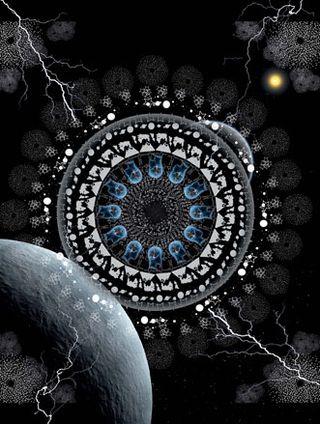
Still from ’Galaxy’
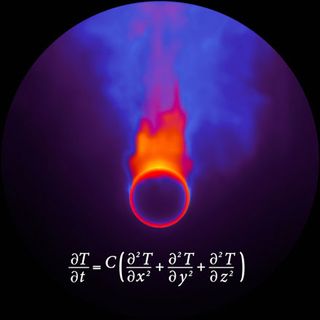
A still from the film ’Mathematical paradises’, by Beatriz Milhazes, depicting Heat Diffusion (Fourier’s equation)
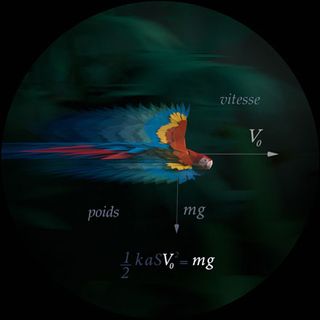
A still from the film ’Mathematical paradises’, by Beatriz Milhazes, depicting Sea Waves (wave equation)
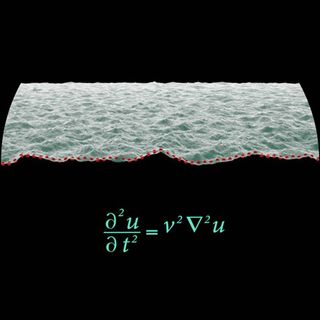
A still from the film ’Mathematical paradises’, by Beatriz Milhazes, depicting Sea Waves (wave equation)
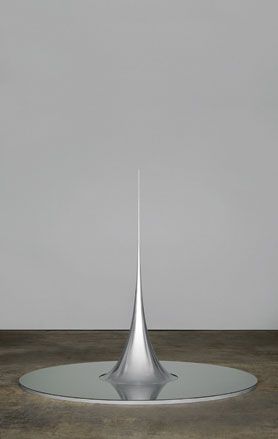
Hiroshi Sugimoto’s aluminum and mirror sculpture ’Conceptual Form 011: Surface of revolution with constant negative curvature’ poses the question: how can mathematical abstraction be represented visually?
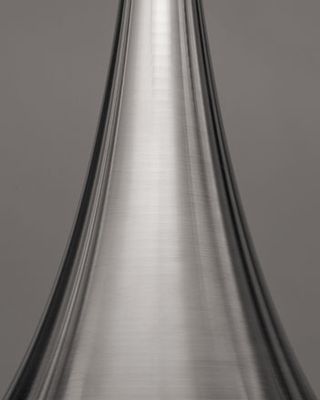
’Conceptual Form 011: Surface of revolution with constant negative curvature’ by Hiroshi Sugimoto
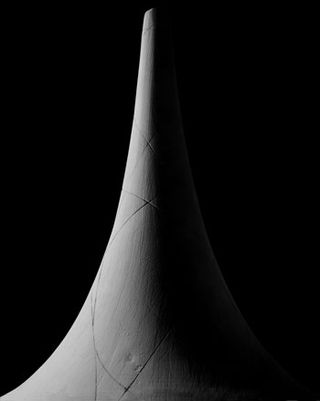
’Conceptual Form 011: Surface of revolution with constant negative curvature’ by Hiroshi Sugimoto
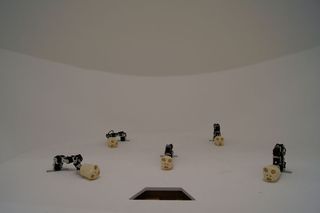
’Ergo-Robots/Flowers Fields: Artificial Curiosity and Language’ - an interactive installation that sees a ’tribe’ of robotic figures emerging from an egg and then exploring their environment, learning new skills and communicating with their human visitors
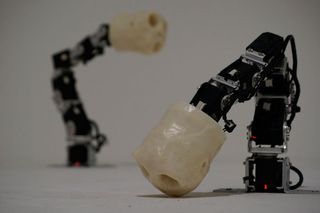
Coordinated by Pierre-Yves Oudeyer, the ’Ergo-Robots/Flowers Fields’ project came about as the result of an encounter between Oudeyer, mathematician Mikhail Gromov and David Lynch. It was realised by INRIA Flowers in collaboration with University of Bordeaux
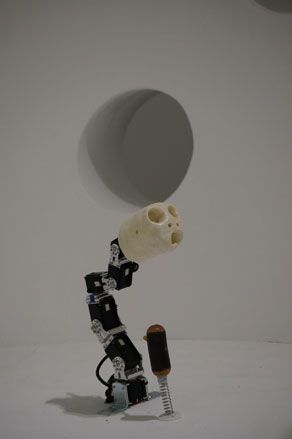
’Ergo-Robots/Flowers Fields’ explores fundamental questions about the nature of humans and machines. Based on recent advanced models of autonomous learning inspired by human infant development, the robots progressively acquire new skills, discover ways to communicate, and organise their own culture
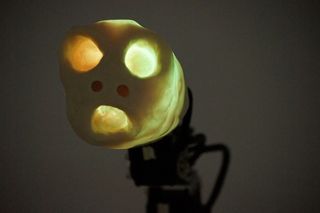
David Lynch designed the heads and the environment of the Ergo-robots - with inspiration, we imagine, from his cult 1977 film Eraserhead
ADDRESS
Fondation Cartier pour l'art contemporain
261, boulevard Raspail
75014 Paris
-
 At CES 2025, Nvidia accelerates towards an AI-driven, robotic-powered autonomous future
At CES 2025, Nvidia accelerates towards an AI-driven, robotic-powered autonomous futureNvidia reveals a personal AI supercomputer, digital replicants of the physical realm, and chips to give cars and robots their long-awaited true autonomy
By Jonathan Bell Published
-
 Wallpaper* 2025 Design Awards issue is on sale 9 January – and full of star turns
Wallpaper* 2025 Design Awards issue is on sale 9 January – and full of star turnsWelcome to the Wallpaper* 2025 Design Awards issue; get your copy to discover the best in design, fashion, technology, architecture, interiors, travel and art
By Bill Prince Published
-
 Sweeping arches and tropical greenery, Fendi's Miami flagship store nods to its Roman roots
Sweeping arches and tropical greenery, Fendi's Miami flagship store nods to its Roman rootsFendi’s flagship boutique reopens in Miami's Design District after an extensive renovation and major expansion; take a peek
By Henrietta Thompson Published
-
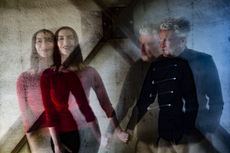 David Lynch's mysterious new project reignites a long-standing collaboration
David Lynch's mysterious new project reignites a long-standing collaborationDavid Lynch and Chrystabell are releasing a new album – listen to the first song, out today
By Charlotte Gunn Published
-
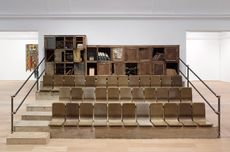 Manchester International Festival welcomes David Lynch, Yoko Ono and more
Manchester International Festival welcomes David Lynch, Yoko Ono and moreWe’ve rounded up a few of our highlights from the festival’s visual arts programme
By Harriet Lloyd-Smith Published
-
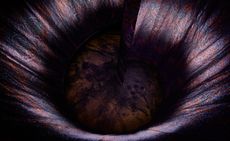 David Lynch looms large in Kyoto heritage weaver Hosoo’s new tapestry
David Lynch looms large in Kyoto heritage weaver Hosoo’s new tapestryBy Jens H Jensen Last updated
-
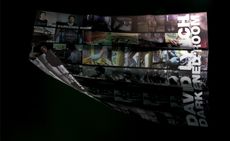 Guest editor David Lynch at Comme des Garçons
Guest editor David Lynch at Comme des GarçonsBy Damon Syson Last updated